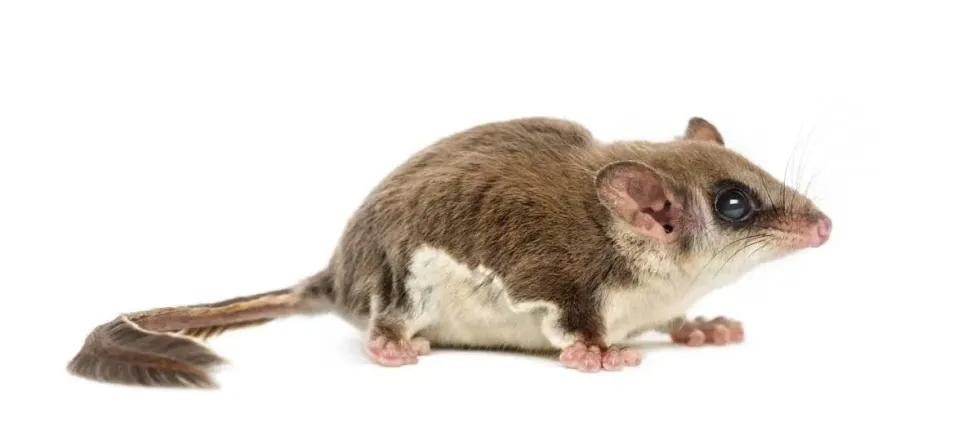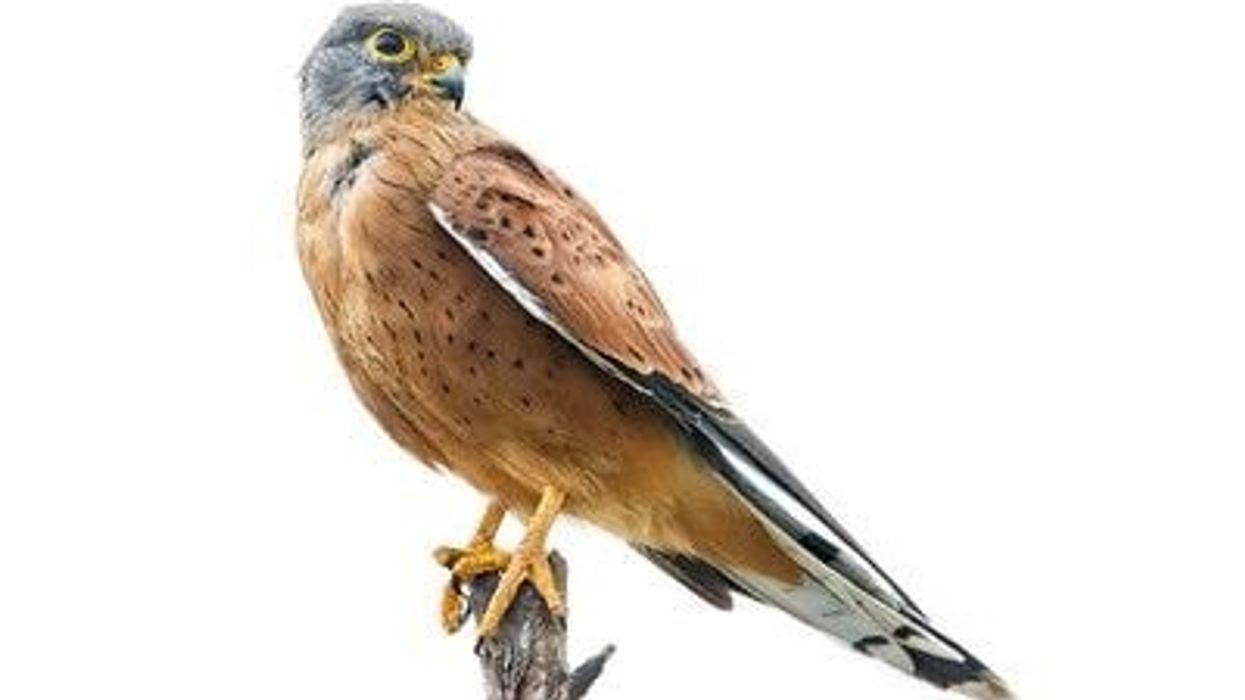Feathertail gliders, often called the pygmy phalanger, are the world's smallest mammal found in Australia. They are also the smallest gliding possum. Feathertail gliders are omnivorous, voraciously feeding on nectar, pollen, termites, and ants.
This possum predominantly falls under the category of nocturnal animals and it rests in the hollows and branches of trees during the day. It is mostly known for its mysterious, swift, and confusing movements along the tall woodlands of south and southeastern Australia.
Though the name flying phalanger would suggest that they can fly, feathertail gliders cannot fly. However, it is important to note that they glide effortlessly along the branches and do not spend much time on the ground.
For the most part, they can be seen on eucalyptus trees. These possums are mainly gliders and climbers.
Possums are usually never found preying on cats or on any other mammals to be precise. They'll only counterattack if they are hunting for food and feel perplexed or cornered.
If you like what you read, do check out our articles on possums and ringtail possums.
Feathertail Glider Interesting Facts
What type of animal is a feathertail glider?
Named after its long feather-like tail, feathertail gliders belong to the species of marsupials that are native to Australia. It is the world's smallest gliding mammal.
What class of animal does the feathertail glider belong to?
A feathertail glider is a mammal. It resembles very much a flying mouse and it belongs to the family of Acrobatidae.
How many feathertail gliders are there in the world?
Since there are not listed under the IUCN Red List, it is difficult to estimate their exact number. However, their numbers are fairly stable and not in immediate danger of becoming vulnerable or endangered.
Where does a feathertail glider live?
Feathertail gliders dwell in southeastern Australia, stretching to south Australia. This species can also be found in Australia's Taronga Zoo. They were first kept there in 1999. These gliders are usually found on trees that have flowers on them as this helps them to access pollen easily.
They are mostly found in groups on tree bark and on trees. Feathertail gliders are also kept as pets in Australian farms and houses. Baby feathertail gliders, which are called joeys, live in the pouch of mother gliders.
What is a feathertail glider habitat?
Feathertail gliders live in the wild woods of continental Australia. Since it is a marsupial species, it is seen in the wide forests of Australia. Grasslands, savanna, shrublands, and woodlands form a major part of the habitat of this animal. The tropical and majorly temperate climate is comfortable for this species. In short, the Australian climate is most suitable.
Who do feathertail gliders live with?
Feathertail gliders live in clustered groups of themselves. Since they live in the temperate Australian habitat, they must live with other native animals like kangaroos. They build nests for themselves in the bark of trees. They can also live with humans as people keep feathertail gliders as pets.
How long does a feathertail glider live?
Feathertail gliders have a life span of about four years, but they can almost live up to five full years.
How do they reproduce?
Their breeding period starts around the month of July and ends roughly in the month of January. Feathertail gliders (Acrobates pygmaeus) have multiple parents as female gliders have sexual activity with multiple partners.
A female pygmy gives birth to two to four young ones at a time. After the first young feathertail glider (Acrobates pygmaeus) is born, the female is open to mate again.
After mating, the second baby goes under an embryonic diapause. Once the first joey has finished weaning after about 105 days, the second feathertail glider is born. Feathertail glider females remain pregnant for about 65 to 100 days.
They have a pouch on their body where they carry their young ones, four babies in total. An interesting fact is that s baby feathertail glider (Acrobates pygmaeus) is called a joey.
What is their conservation status?
The IUCN Red List does not list their conservation status, they have a status of Not Evaluated. Although feathertail glider populations are fairly stable, it is in danger in South Australia due to logging practices.
Feathertail Glider Fun Facts
What do feathertail gliders look like?
They have received their name from their exceptional flat, feather-like tail. They have adorned long stiff hairs starting from the base and extending to the tip of their tails. This gives the tail a comb-shaped structure.
Besides these hairs, they have grayish-brown fur all over the abdomen. Their fur is characterized by whitish cream-like spots or regions sometimes. Their gliding membrane extends from the elbow to the knee, thus increasing the body surface area.
If you look closely, you may notice a quirky structure in front of their eardrum that looks like a crescent moon. They are cold-blooded animals and the body temperature of these animals alters throughout the day. It varies by approximately 36.5 F (3.5 C).

How cute are they?
Being the world's smallest gliding possum, people find them very cute. This gliding species can be kept as pets in houses and farms.
Their soft and silky fur makes them very popular with humans. They have long stiff hairs as whiskers and their tail is shaped like a feather. A feathertail glider's tail is almost as long as its body which adds to its cuteness.
How do they communicate?
They make hissing, buzzing, and screaming sounds with each other and with humans to communicate.
How big is a feathertail glider?
Their head and body length is around 2.6-3.1 in (6.5-8 cm), which is around half the size of a mouse. This glider has a feather-shaped tail length of around 3.15 in (7-8 cm) long. Their tail is used for flight and gliding purposes.
How fast can a feathertail glider fly?
Flying, or rather gliding, is a significant feature of them. They glide across trees and they can glide 28 ft (8.5 m) at a time and do this five times in an hour.
These gliders can travel quite long distances. They stay in the bark of a tree for shelter and food.
There are pads between their elbows and knees and this membrane between their elbows and knees is known as the gliding membrane. Another feature of the feathertail glider (Acrobates pygmaeus) is that it can steer, brake, and anchor itself with the help of its feather-like tail.
How much does a feathertail glider weigh?
They weigh around 0.026 lb (12g). You can even carry one of them in your hand as they weigh very little.
What are the male and female names of the species?
There is no such particular name for males and females of this species.
What would you call a baby feathertail glider?
A baby glider is called a joey.
What do they eat?
This species of possums are omnivorous, feeding on nectar, pollen, termites, moths, and ants. Females bear the joeys and feed them sap, honeydew, gum, fungi, and seeds.
Are they dangerous?
They are not dangerous to humans. The only problem is that this species creates a loud noise, almost like a scream, that can disturb and scare people at times. This glider is almost the size of a small mouse, therefore it is not that dangerous or harmful. However, they are under threat from foxes and cats.
Would they make a good pet?
They would make a fantastic and wholesome pet. It is always advised to adopt an animal, rather than buying one. Also, it is important that you provide a high level of care and also have the correct environment so that your pet can thrive. When kept as pets, they live in boxes made by humans or inside telephone boxes.
Did you know...
Until 1991, the Australian government had been putting the imprint of this animal on their 1-cent coin.
While living in the wild, they are preyed on by owls, bats, snakes, and lizards.
These animals are very much acrobatic from which they got their name. They can show lots of tricks while being on the tree.
A pygmy glider needs its long tail for smooth and easy gliding. The average length of an adult sugar glider's tail is 6.3 in (16 cm).
Are feathertail gliders nocturnal?
Yes, they are nocturnal which means they spend the day resting in their nests and hunting for food at night.
Can a possum kill a cat?
Though it is very rare to see a possum killing a cat, it can still happen. However, as possums look similar in size to a mouse, it is more common that wild cats or domesticated cats to kill possums instead.
Here at Kidadl, we have carefully created lots of interesting family-friendly animal facts for everyone to discover! Learn more about some other mammals including honey possum and Virginia opossum.
You can even occupy yourself at home by drawing one on our feathertail glider coloring pages.
Thank you to Kidadler Micah Harley for providing the image of the Feathertail Glider in this article.










